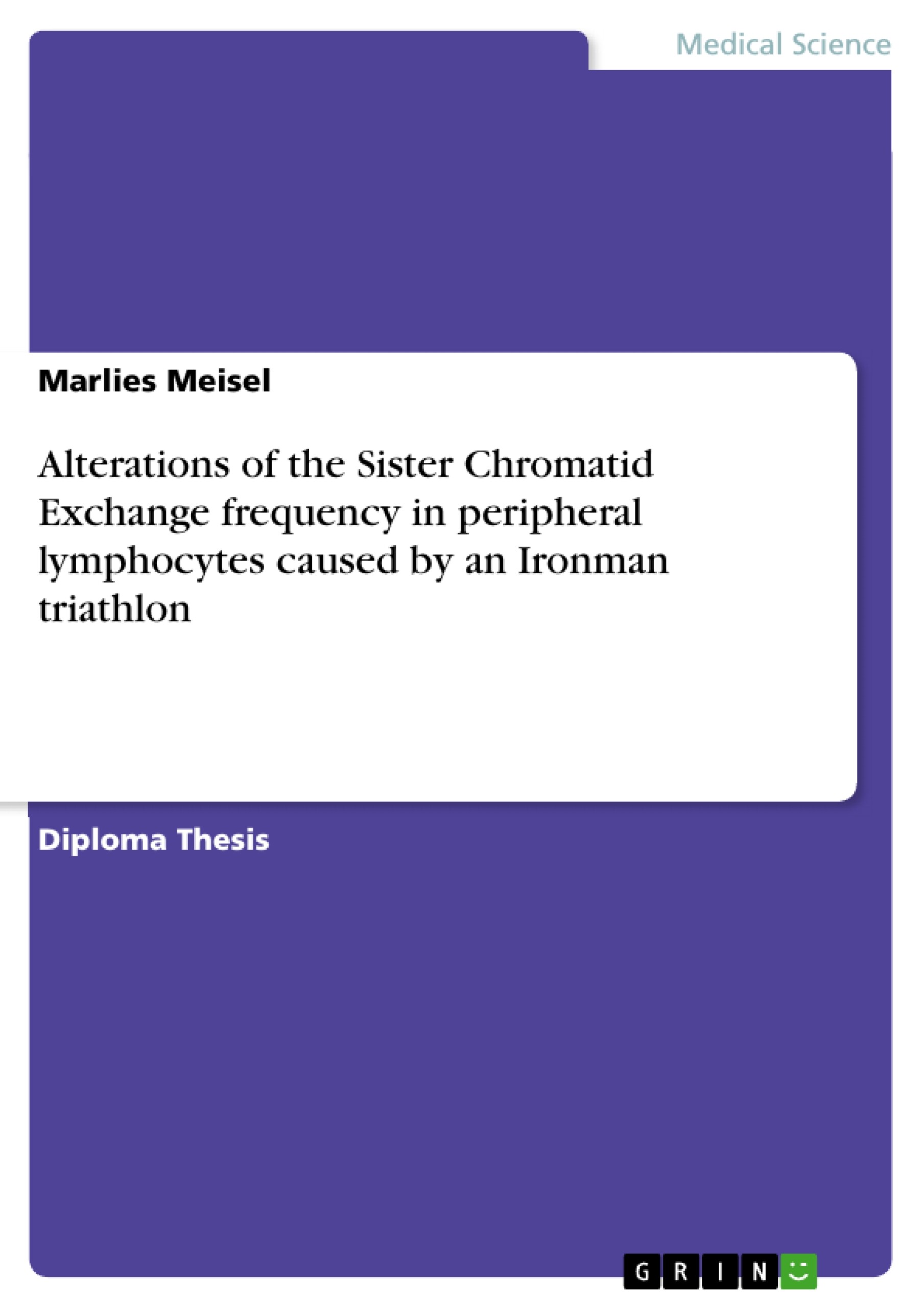Alterations of the Sister Chromatid Exchange frequency in peripheral lymphocytes caused by an Ironman triathlon
| Auflage | 1. Auflage, 2008 |
| Verlag | GRIN Verlag |
| ISBN | 9783638906739 |
Sofort zum Download (Download: PDF)
Produktbeschreibung
Diploma Thesis from the year 2007 in the subject Medicine - Human Genetics, grade: 1,0, University of Vienna (Institut für Ernährungswissenschaften), language: English, abstract: The aim of the present study was to investigate the effect of a triathlon (3.8 km swim, 180 km cycle, 42,2 km run) on the genomic stability of nine highly trained non-
professional athletes.
Therefore, the SCE assay, a relevant biological response marker for genotoxicity in
human biomonitoring studies [PENDZICH et al., 1997] was performed using peripheral
lymphocytes, on account of their effortless accessibility [WILKOSCY and RYNARD,
1990].
Duplicate lymphocyte cell cultures, of each participant, were incubated for 72 h (37°C, 5% CO2) according to a short-term human lymphocyte cell culture. For each participant at least 50 metaphases, containing 43-46 chromosomes were scored, to evaluate the mean SCE frequency. The number of SCEs per cell was calculated to a chromosome set of a normal diploid human cell, containing 46 chromosomes.
In the present study the alteration of SCE frequency, 48 h pre- and 24 h postrace was evaluated. As an additional endpoint Top 5 HFCs (highest five absolute SCE means) were assayed. It could be demonstrated that both the total mean SCE frequency and the mean Top 5 HFC frequency (n=9) 24 h postrace were significantly decreased (*p< 0.05) compared to 48 h prerace values. Considering the training status, a significant negative correlation between the relative SCE changes before and after the triathlon was observed for the cycling training per week (km) (r=-0.86; **p< 0.01), the running training per week (km) (r=-0.90; *p< 0.05)
as well as for the weekly net exercise training time (h) (r=-0.89; *p< 0.05). The relative changes of Top 5 HFCs before and after the race correlated significantly with the cycling training per week (km) (r=-0.79; *p< 0.05) and with the body mass index
(kg/m2) (r=-0.69; *p< 0.05). These findings suggest the existence of endogenous repair mechanisms which seem to prevent DNA damage.
